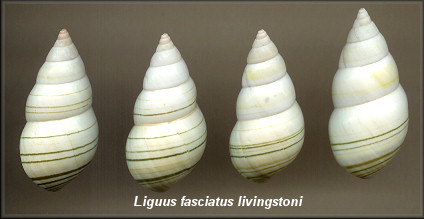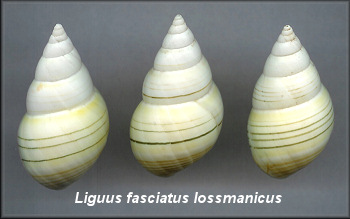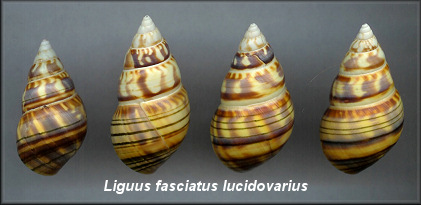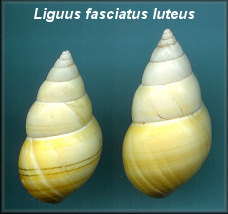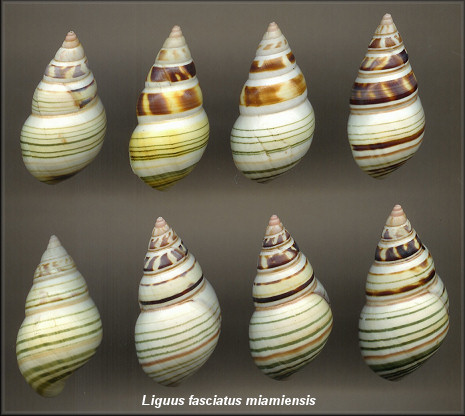|
|
| Form livingstoni is basically a roseatus that has lost the yellowish rosetus band on the later whorls. Also, it lacks the pink to yellowish sutural line (always present in roseatus) and the distinct peripheral line on the body whorl (usually present in roseatus). It usually has numerous green lines. Brickell is the type locality for this form. Illustrated specimens are from the grimshaw collection, circa 1930's. (MWJ) |
|
|
| Brickell Liguus fasciatus lossmanicus usually has inflated (convex) whorls with a series of green lines. The body whorl is usually yellowish-white in coloration. It typically lacks the high gloss and body coloration of Liguus fasciatus mosieri. To confuse matters, this form clined into specimens that could be called luteus and eburneus. Placement of the lighter colored forms in Brickell was not always agreed on by collectors and enthusiasts. (MWJ) |
|
|
| Some specimens from Brickell are very similar to those from the official type locality of the form - Pinerest Hammock 11. (MWJ) |
|
|
|
|
| The Liguus fasciatus cataneozonatus complex in Brickell clines into form miamiensis, with intergrades being present. The shells in the bottom row are classic Brickell miamiensis. Some of the shells in the top row might be considered to lean more toward castaneozonatus. The differentiating features between the two forms are (1) the amount of breakdown of the castaneozonatus color band on the last whorl and (2) the amount of green lines. (MWJ) |
|
|
